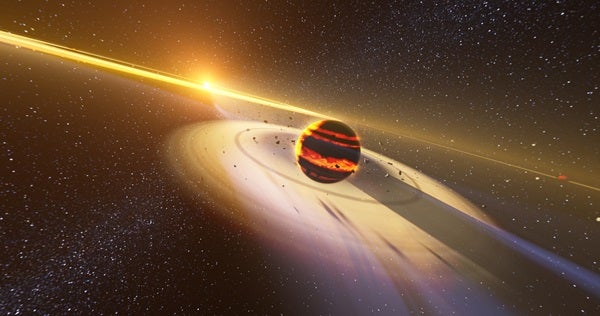The team created a detailed 360° visual display to teleport viewers from Earth to these exotic worlds, to see how they differ from our own planet.
The researchers also provide a commentary to guide virtual space travellers through the experience.
Since launching late last year, the virtual planet tour has attracted one million views on the social media channel, Youtube.
What would it be like to stand on the surface of another planet? We teamed up with a group of astrophysicists to create a scientifically accurate, virtual reality tour of six planets discovered outside our solar system. So strap on a VR headset, surf the giant waves of Kepler-62e, and gaze across the lava fields of 55 Cancri e.
Engine House Vfx / University of Exeter / We The Curious
Nathan Mayne, from the University of Exeter and scientific lead on the project said: “It is great to know that our research into distant planets has fascinated so many people. However, more importantly hopefully through this video we have been able to explain and demystify our research enabling everyone to understand and get excited about our exploration of the planets in our galaxy.
“The most enjoyable thing about this project is the opportunity to work with our expert partners to really bring the research to life in a visually engaging way. This combined with narration from our PhD students really allowed us to produce a unique experience and insight for the viewer.
“The mini-documentary gives a snapshot of astrophysical techniques, and what we have learned about planets using them. I really hope that this video continues to allow people to engage with this scientific field.”
The pioneering video transports viewers to a range of exotic planets beyond our solar system.
These planets include: Wasp – 121b, a planet so close to its star that its atmosphere is being driven off by its parent star; Kepler-62e, a planet which is potentially entirely covered by a deep ocean, and ravaged by monster waves, and 55 Cancri e, a hellish planet likely to be covered in vast lava flows and constantly engulfed in huge lightning storms.
At the time of its launch Ross Exton, video producer for We The Curious said: “I wanted to create something I’d never seen before. By collaborating with talented visual effects artists and astrophysicists currently studying these exoplanets, we were able to create a series of visuals which are not only stunning, but are informed by real scientific research.”










